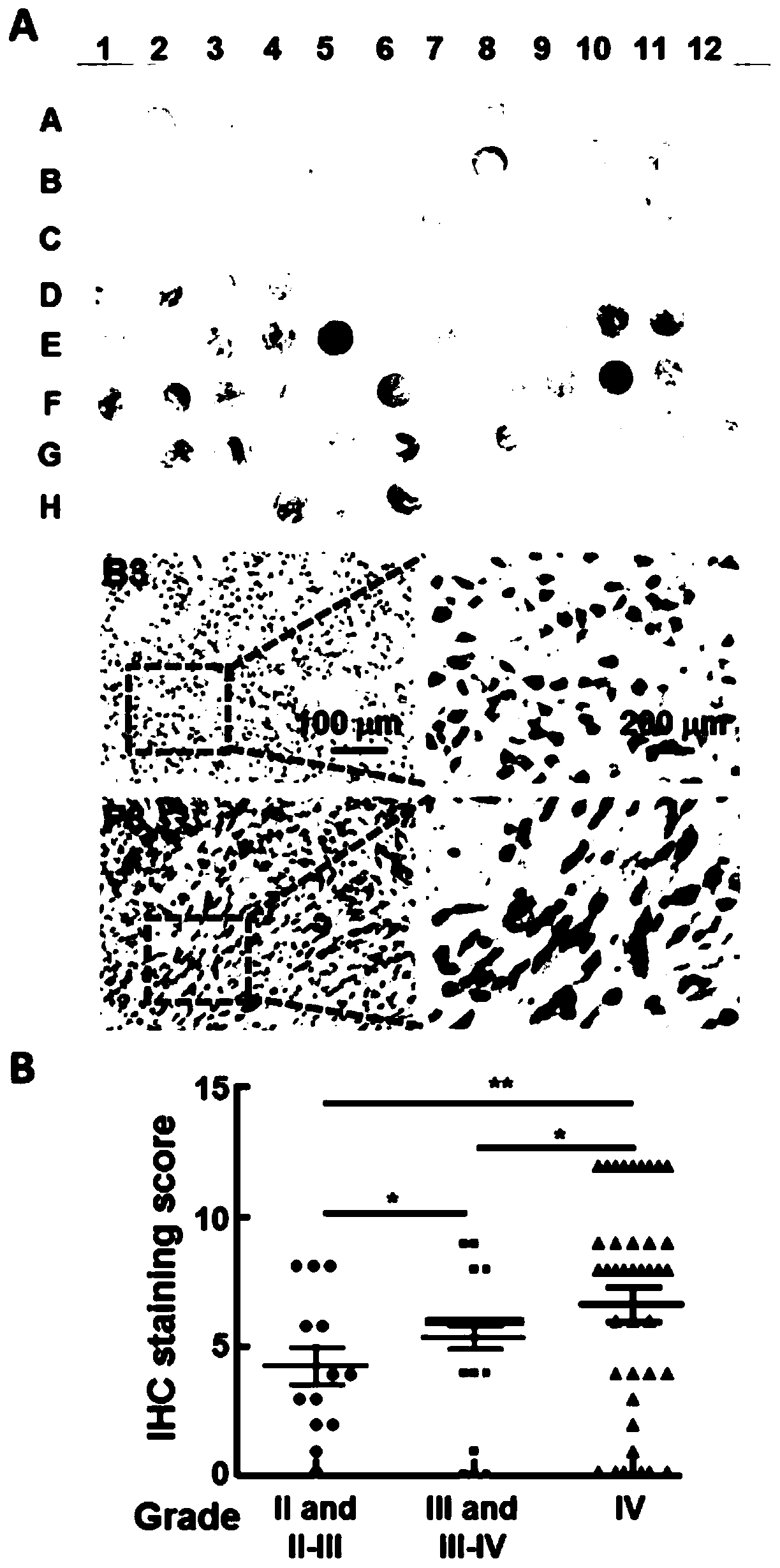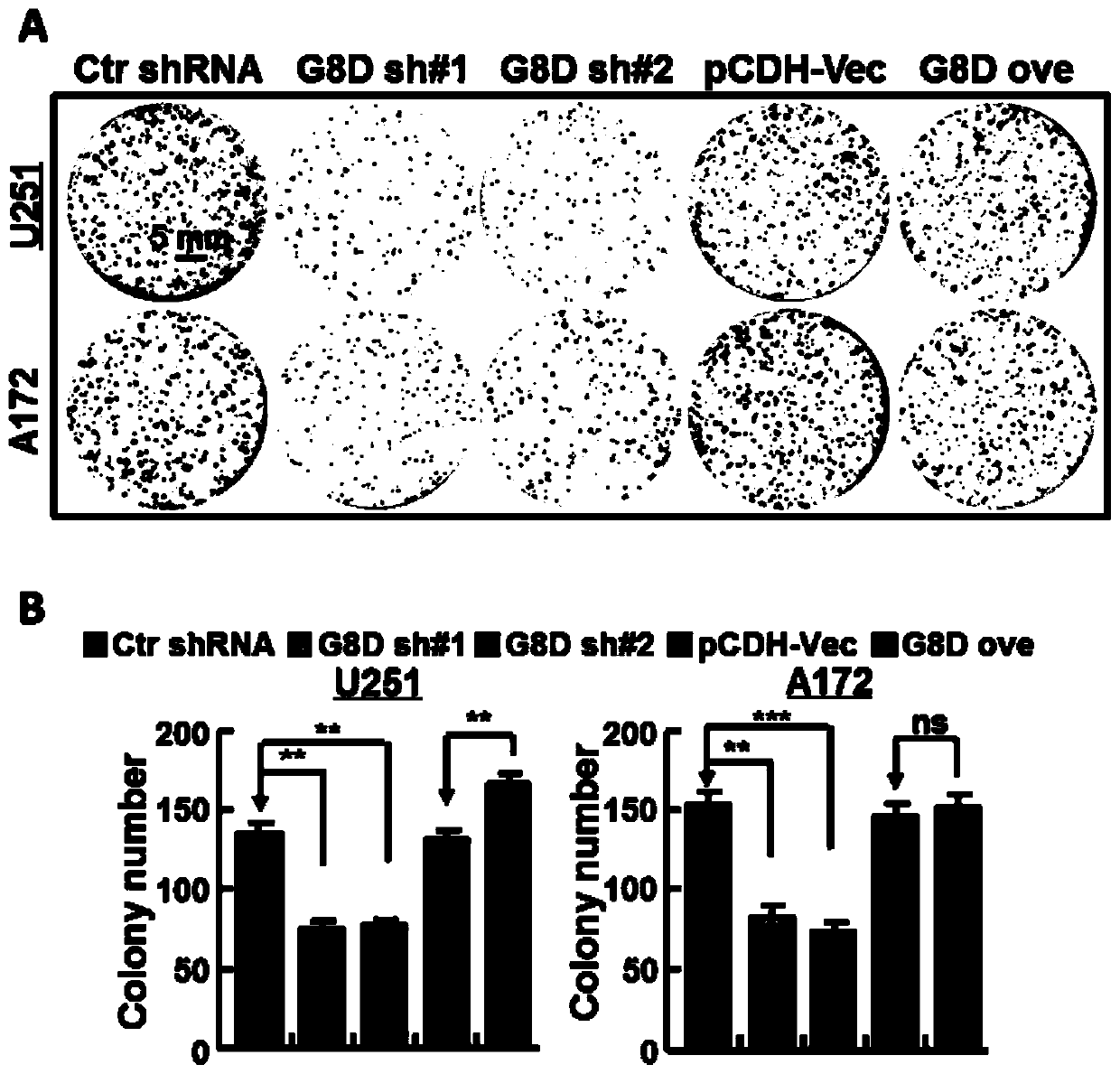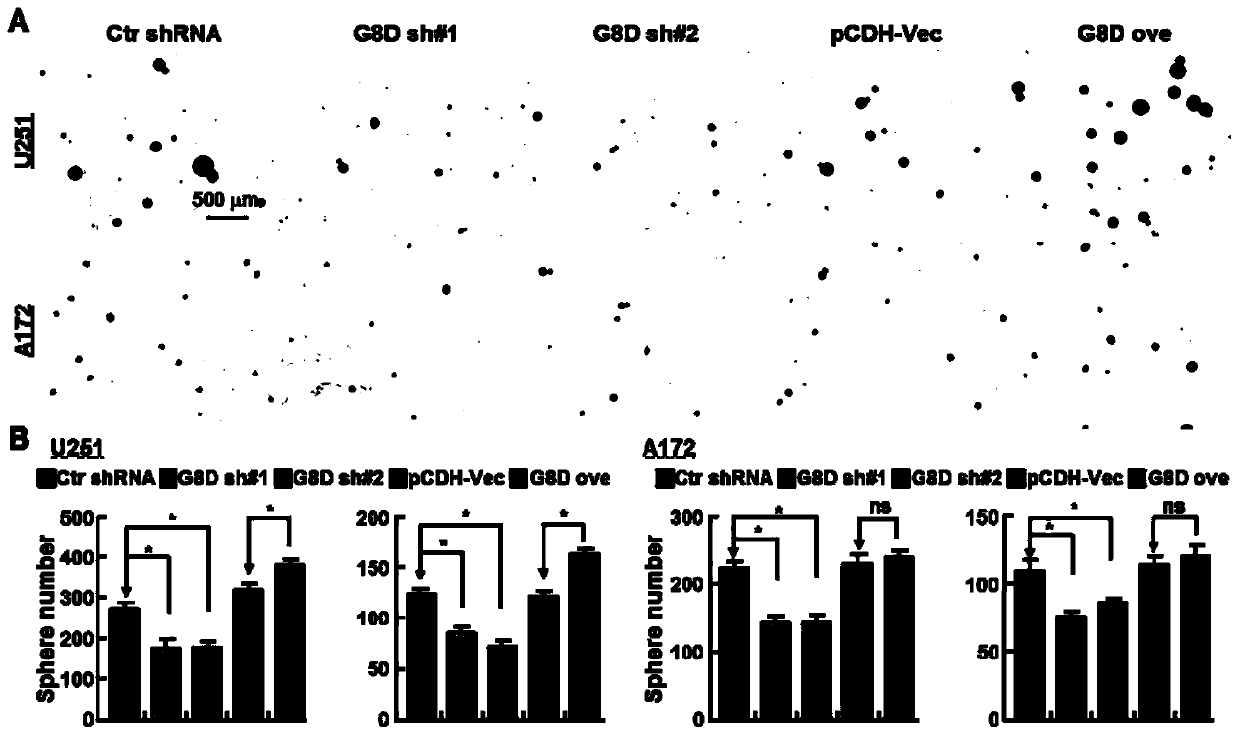Novel application of human CD133 protein 1-108 peptide fragment
A protein and peptide technology, applied in the field of biomedicine, can solve problems such as unrelated research reports, and achieve the effect of great application value and prospects
- Summary
- Abstract
- Description
- Claims
- Application Information
AI Technical Summary
Benefits of technology
Problems solved by technology
Method used
Image
Examples
Embodiment 1
[0053] Embodiment 1: pathophysiological detection
[0054] The glioblastoma chip entrusted Shanghai Xinchao Company to carry out immunohistochemical experiments to analyze the correlation between the expression of GLT8D1 and the clinical grade of glioma patients; perform HE staining experiments on tumor tissues taken out of experimental animals;
[0055] The immunohistochemical staining experiment was as follows: fix the tissue to be tested overnight with 4% PFA, rinse the fixed tissue block with running water for 30 minutes; 75% ethanol for 1 hour; 80% ethanol for 1 hour; 90% ethanol for 1 hour; 95% ethanol I for 1 hour; Ⅱ 1h; 100% ethanol Ⅰ 1h; 100% ethanol Ⅱ 1h; xylene Ⅰ 35min; xylene Ⅱ 35min; immersion in paraffin: paraffin Ⅰ 1h; Slice with a thickness of 3 μm, select complete and flat slices, spread them in hot water at 56°C, and dry at 65°C for 30 minutes; then perform dyeing operations: 3 cylinders of xylene, 10 minutes each; 2 cylinders of absolute ethanol, 2 minutes e...
Embodiment 2
[0058] Example 2: Effect of human GLT8D1 knockdown or overexpression on the formation of glioma cell clone spheres
[0059] 1. Construction of GLT8D1 stably knocked down or overexpressed cell lines
[0060] Utilize the lentiviral gene overexpression vector pCDH-MSCV-eGFP-3×Flag to construct the GLT8D1 overexpression vector, design PCR primers to amplify the coding region sequence of the human GLT8D1 gene, and clone it into the above overexpression vector, the PCR primer is F: ATGTCATTCCGTAAAGTAAAC, R: TCACTTTATGTTTGAGATCTC, negative control is pCDH-MSCV-eGFP-3×Flag; use pLKO.1shRNA expression vector, design shRNA target sequence according to human GLT8D1 gene sequence, synthesize 2 pairs of oligonucleotide sequences, and synthesize control oligonucleotide Nucleotide sequence, the above oligonucleotide sequence was coupled and cloned into the pLKO.1 vector, the negative control scramble shRNA sequence was: GCACTACCAGAGCTAACTCAG; the 21bp shRNA targeting GLT8D1 sequences were: s...
Embodiment 3
[0070] Example 3: Western blot detection experiment of glioma stem cell markers in GLT8D1 knockdown or overexpression cells
[0071] After the cells were treated according to the specific experiment, the supernatant medium was discarded, and washed once with PBS; the corresponding cell lysate was added according to the amount of the cell pellet, and the cells were repeatedly frozen and thawed on ice for 3 times, and pipetting was continued during the period; 4°C , Centrifuge at 15000rpm / min for 10min, take the supernatant and discard the precipitate for subsequent experiments. After the BCA protein is quantified, add 5× loading buffer, boil in a metal dry heat apparatus at 100°C for 5 minutes; directly perform polyacrylamide gel (SDS-PAGE) electrophoresis, or take it out and put it on ice to cool and subpackage. Store at -80°C. Add 30-50 μg of protein to each well, first run the stacking gel by electrophoresis at 80V voltage, and then run electrophoresis at 120V voltage until...
PUM
 Login to View More
Login to View More Abstract
Description
Claims
Application Information
 Login to View More
Login to View More - R&D
- Intellectual Property
- Life Sciences
- Materials
- Tech Scout
- Unparalleled Data Quality
- Higher Quality Content
- 60% Fewer Hallucinations
Browse by: Latest US Patents, China's latest patents, Technical Efficacy Thesaurus, Application Domain, Technology Topic, Popular Technical Reports.
© 2025 PatSnap. All rights reserved.Legal|Privacy policy|Modern Slavery Act Transparency Statement|Sitemap|About US| Contact US: help@patsnap.com



